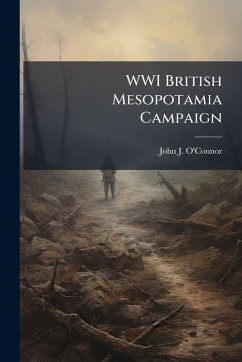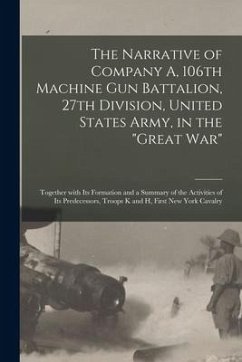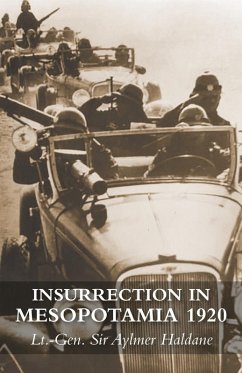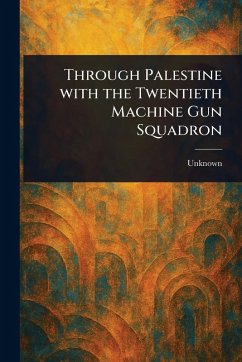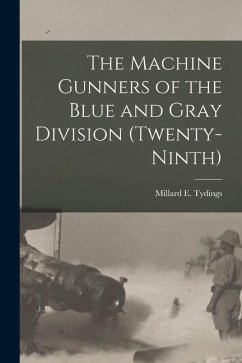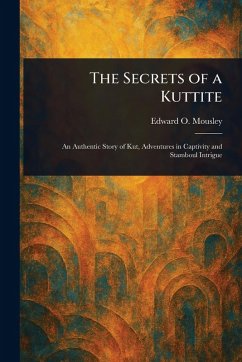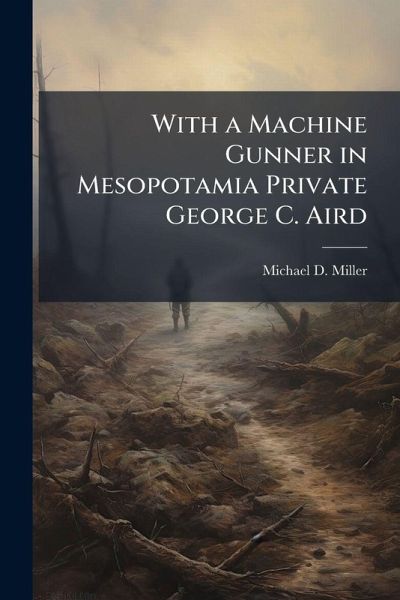
With a Machine Gunner in Mesopotamia Private George C. Aird
Versandkostenfrei!
Versandfertig in über 4 Wochen
14,99 €
inkl. MwSt.
Weitere Ausgaben:

PAYBACK Punkte
7 °P sammeln!
This is the story of Private George C. Aird, a machine gun transporter, who entered the Great War in 1915 as a replacement troop in the 2nd Black Watch Battalion, which had been thinned from initial relief attempts in Mesopotamia. Starting from Davenport, England, Aird sailed through the Mediterranean and Suez Canal, around the Arabian Peninsula into the Persian Gulf. From the Basra port, he marched and fought up the Tigris River as far north as Baghdad and Tikrit for the next year-and-a-half as a member of the 21st Brigade, 7th Indian Division, Tigris Corp. This paper presents Private Aird's ...
This is the story of Private George C. Aird, a machine gun transporter, who entered the Great War in 1915 as a replacement troop in the 2nd Black Watch Battalion, which had been thinned from initial relief attempts in Mesopotamia. Starting from Davenport, England, Aird sailed through the Mediterranean and Suez Canal, around the Arabian Peninsula into the Persian Gulf. From the Basra port, he marched and fought up the Tigris River as far north as Baghdad and Tikrit for the next year-and-a-half as a member of the 21st Brigade, 7th Indian Division, Tigris Corp. This paper presents Private Aird's background prior to World War I, explains the chain of events that required his deployment into the Mesopotamian Theater and describes the battles his unit fought in to relieve the besieged division at Kut-al-Amara. This work has been selected by scholars as being culturally important, and is part of the knowledge base of civilization as we know it. This work was reproduced from the original artifact, and remains as true to the original work as possible. Therefore, you will see the original copyright references, library stamps (as most of these works have been housed in our most important libraries around the world), and other notations in the work. This work is in the public domain in the United States of America, and possibly other nations. Within the United States, you may freely copy and distribute this work, as no entity (individual or corporate) has a copyright on the body of the work. As a reproduction of a historical artifact, this work may contain missing or blurred pages, poor pictures, errant marks, etc. Scholars believe, and we concur, that this work is important enough to be preserved, reproduced, and made generally available to the public. We appreciate your support of the preservation process, and thank you for being an important part of keeping this knowledge alive and relevant.



